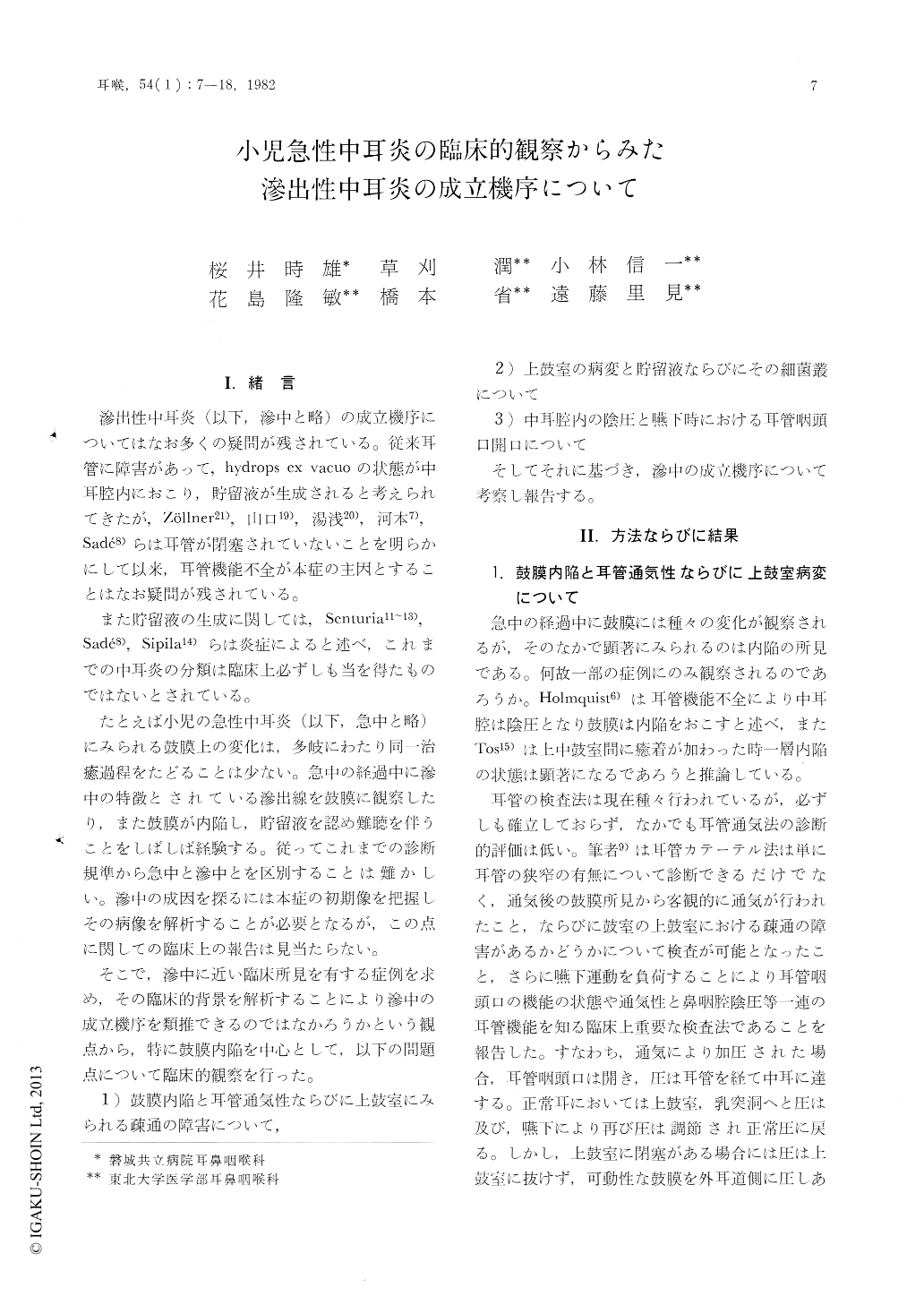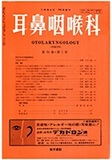Japanese
English
- 有料閲覧
- Abstract 文献概要
- 1ページ目 Look Inside
I.緒言
滲出性中耳炎(以下,滲中と略)の成立機序についてはなお多くの疑問が残されている。従来耳管に障害があって,hydrops ex vacuoの状態が中耳腔内におこり,貯留液が生成されると考えられてきたが,Zollner21),山口19),湯浅20),河本7),Sade8)らは耳管が閉塞されていないことを明らかにして以来,耳管機能不全が本症の主因とすることはなお疑問が残されている。
また貯留液の生成に関しては,Senturia11〜13),Sade8),Sipila14)らは炎症によると述べ,これまでの中耳炎の分類は臨床上必ずしも当を得たものではないとされている。
The purpose of this study is to elucidate etiology of secretory otitis media and to investigate whether tubal dysfuncton plays arole in development of secretory otitis media or whether secretory otitis media develops directly from acute otitis media.
92 ears with acute otitis media were studied. All ears had retraction of ear drum with effusion which was confirmed by otomicroscopy.
The Eustachian tube function was determined by inflation by means of catheterization. In all cases, inflation of the tube made the drum bulging prominently. All ear had signs of blocked ventilation of epitympanum, at the same time, it became clear that the tubal active opening functions was maintained even in the cases of typical secretory otitis media. Negative pressure of the middle ear was influenced by the nasopharyngeal pressure produced by swallowing.
The authors were unable to demonstrate that tubal dysfunction plays a role in development of secretory otitis media. From the results obtained, it was emphasized that secretory otitis media may be classified as a type of acute otitis media in its etiology.

Copyright © 1982, Igaku-Shoin Ltd. All rights reserved.


